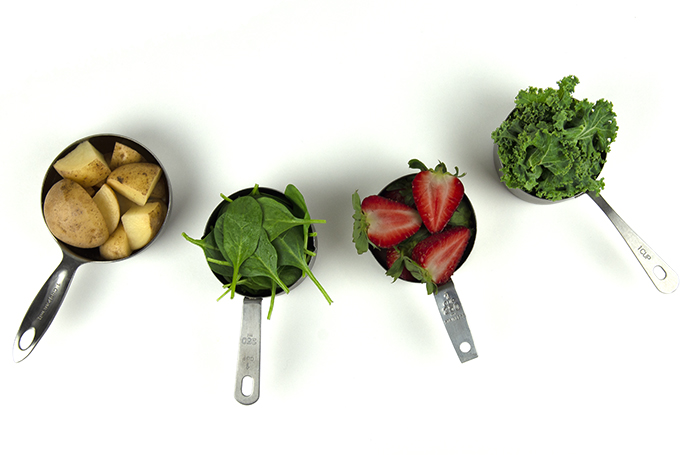From Our Dietitians: Immune-Supportive Recipes with Vitamin D
Nutrition, From Our Kitchen, From Our Chefs
As you navigate the COVID-19 pandemic, you’re probably already washing your hands, physical distancing, and wearing masks. You might also be making changes to support and strengthen your immune system. Although no single food or nutrient will protect against illness, eating a balanced diet with specific nutrients can help. Vitamin D is well known for its role in supporting bone health, but it also plays a role in immune function. It’s a fat-soluble vitamin as well as a hormone the...
From Our Dietitians: Trending Oils
Nutrition
After decades of low-fat and no-fat hype, health experts agree that fats have an important place in the diet. After all, fat adds flavor, provides energy, helps you feel full, and promotes healthy neurological function. The three main types are saturated, unsaturated, and trans fat. Saturated and trans fats have tight bonds that make them solid at room temperature. Examples include butter, coconut oil, shortening, and bacon fat. Unsaturated fats have looser bonds, making them fluid at room temperature. Examples...
From Our Dietitians: Is Sea Salt Worth Its Salt?
Nutrition
“Is sea salt healthier than table salt? If so, should we swap them in all our recipes?” We weren’t entirely sure how to answer this question from one of our communities, so we did what we do anytime we’re curious about a trending ingredient or nutrition topic — evidence-based research! We found that the main difference between sea salt and table salt is how they’re produced. Sea salt is made by evaporating water and minimally processed to retain trace...
Navigating Health and Wellness Trends
Nutrition
There’s a ton of nutritional information and advice circulating out there, and it can be overwhelming and confusing to separate fact from fiction. Our Registered Dietitians are constantly evaluating the latest nutritional research, claims, and trends, and it helps to take a thoughtful, balanced approach. Here are some of the considerations when digesting nutritional information. Try practicing them the next time you hear about the hottest new trend! What’s being said? Take a look at the claims and benefits touted...
Tips for Cooking as a Family
Nutrition
While cooking may sometimes feel like another chore, it can also be a great opportunity! Use the time in the kitchen to bond with your family and reinforce math and science skills with your children. Cooking and eating are social activities and are much more enjoyable when shared with others. While you’re cooking, consider sharing stories about recipes that have been passed down and family members you’re not able to see during this time of isolation. It might even be...
From Our Dietitians: Immune-Supportive Nutrients and Recipes
Nutrition
Boost your immune system by managing stress; getting plenty of sleep; practicing good hygiene; and — you guessed it — eating a well-balanced diet with protein, carbohydrates, fats, and lots of fruits and vegetables. No single nutrient can protect you from illness, but regularly eating a variety of nutrients boosts your immune system. Look for these immune-supportive nutrients and foods that contain them: Vitamin C: citrus fruits (oranges, grapefruit), red and green bell peppers, kiwifruit, broccoli, strawberries, potatoes, and tomatoes...
Nutrition Labeling Updates
Nutrition
In May 2016, the U.S. Food and Drug Administration updated the Nutrition Facts label to reflect more current scientific information about dietary links to chronic disease and give consumers more information to help them make the best choices for their health. You may have noticed this new label on some products already. Large manufacturers were required to use it by January 1, 2020, while smaller companies have an additional year (January 1, 2021) to make the switch. Check out...
Raising Food Allergy Awareness
Nutrition, Allergies
Each May, Food Allergy Research & Education (FARE) uses a week to encourage others to partake in activities, events, and education to help raise food allergy awareness. This year, Food Allergy Awareness Week runs May 10-16. Food allergies are severe and sometimes life-threatening conditions that affect more than 32 million Americans, with 1 in every 13 children having a food allergy, according to FARE. In the United States, the top eight allergens are peanuts, tree nuts, milk, egg, fish, shellfish...





